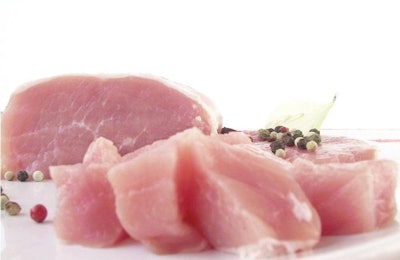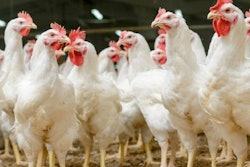
Relatively high and rising prices for competing meats, beef and lamb, are expected to push up retail prices for chicken and pork in Australia, according to the country’s Department for Agriculture and Water Resources.
National production of poultry and pig meats are also forecast to increase, according to the latest quarterly “Agricultural Commodities” report based on data from the Australian Bureau of Agricultural and Resource Economics and Sciences (ABARES).
Strong domestic demand for pork
With the average retail price for beef heading for AU$20 (US$15) per kilogram and lamb rising towards AUD15, pork looks good value at around AU$12 (US$9), especially as it has hardly changed over the last decade. ABARES forecasts that the average price received by producers will increase by 4 percent in 2016-17 to average AU$0.380 (US$.285) per kilo. The forecast may be less welcome for producers, who enjoyed an increase of 15 percent over the past year.
These price rises have been possible despite annual increases in pork production in Australia over the last eight years. Sow inventory has been on a gradual upward trajectory to an estimated 275,000 in 2015-16, and feed grain prices are forecast to remain low in the year ahead, helping to drive up the number of pigs slaughtered by 1.5 percent to 5.08 million in 2016-17. With slaughter weights also creeping up, 385,000 metric tons is the estimated total carcass weight produced for the current year.
Despite increased production, Australian pork exports were down in 2015-16 in volume terms to 27,000 metric tons, largely due to the strong domestic demand. The value of those exports was up, however, by 17 percent to AU$119 million. For 2016-17, ABARES forecasts the volume of pork exported likely to remain about the same, and the value to rise 4 percent to AU$124 million. Main destination for Australian pork has been and is likely to remain Singapore.
Under the country’s strict biosecurity rules, imports of pork are permitted only from certain countries, and the meat must be processed before sale. Again, it was strong demand that led to more pork imports last year – by 4 percent to 167,000 metric tons – and a further 5 percent increase is forecast by ABARES for 2016-17.
Lower chicken prices set to drive up consumption
As for pork, the consumption of poultry meat in Australia has been rising as beef and lamb have become more expensive over the last 20 years. ABARES figures show that for chicken meat alone, the retail price is now lower than in 1995-96.
Production rose 3 percent in 2015-16 to reach 1.15 million metric tons, and a further 4 percent increase to 1.20 million metric tons is forecast for the current year. The report highlights the rapid growth in poultry slaughtering in the state of Queensland – by 23 percent since 2010 – which is much faster than New South Wales or Victoria.
Over recent years, average carcass weights have been steady at around 1.86 kg. With grain prices forecast to remain low in the year ahead, the average is expected to rise slightly this year as producers seek to increase the per-bird yield.
Papua New Guinea has traditionally been the leading destination for Australian chicken meat exports. However, the government banned raw meat exports from Australia between April 2015 and February 2016, and the trade has not yet resumed. With volumes also down to the Philippines, Australian chicken exports amounted to 26,683 metric tons in 2015-16, a 22 percent decline from the previous year. Most exported products are offals, such as feet, kidneys and livers. For the current year, exports are forecast to increase again by around 2 percent to 27,300 metric tons.
Australian imports of chicken, on the other hand, have been growing over the last decade and reached a record 12,339 metric tons in 2015-16, with New Zealand the source of about four-fifths of the total. With demand continuing to strengthen, ABARES forecasts that Australia’s chicken meat imports will be 2 percent higher still in 2016-17.
Until very recently, Australian biosecurity regulations demanded that all imported meat was processed. In August, New Zealand’s largest poultry company, Tegel Group Holdings announced that it had been granted access to the Australian market for its raw poultry meat.

















